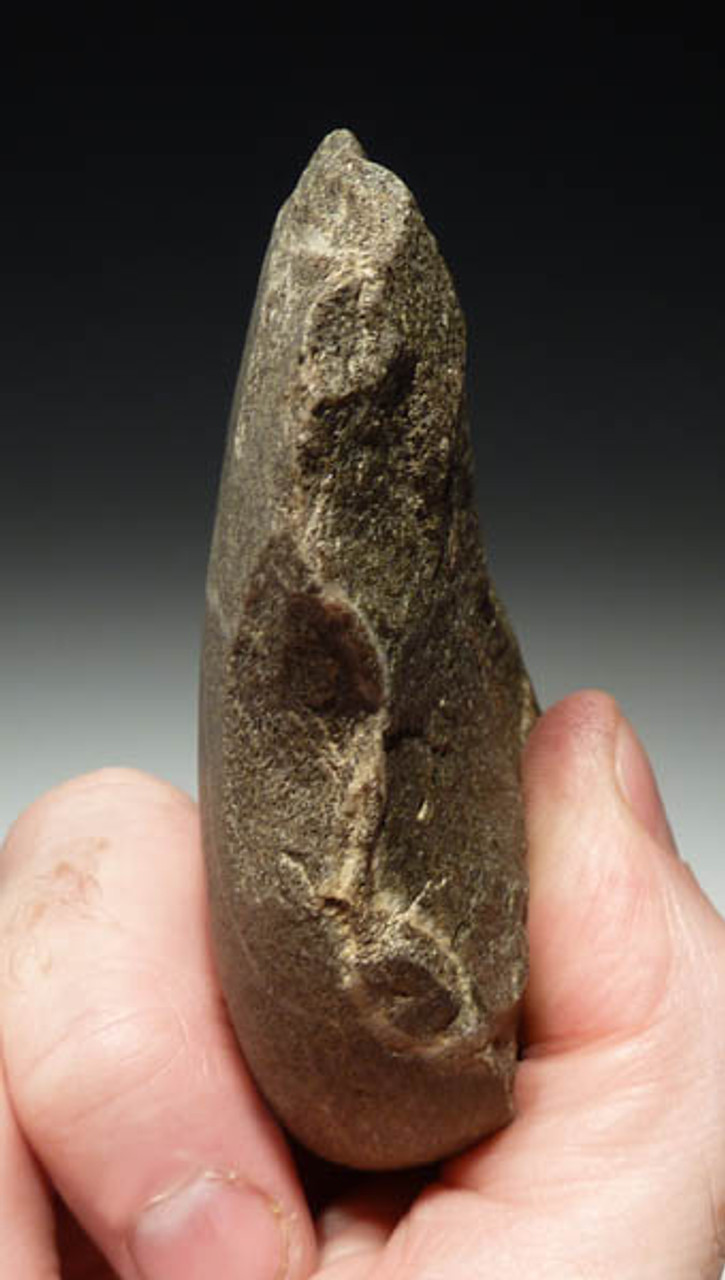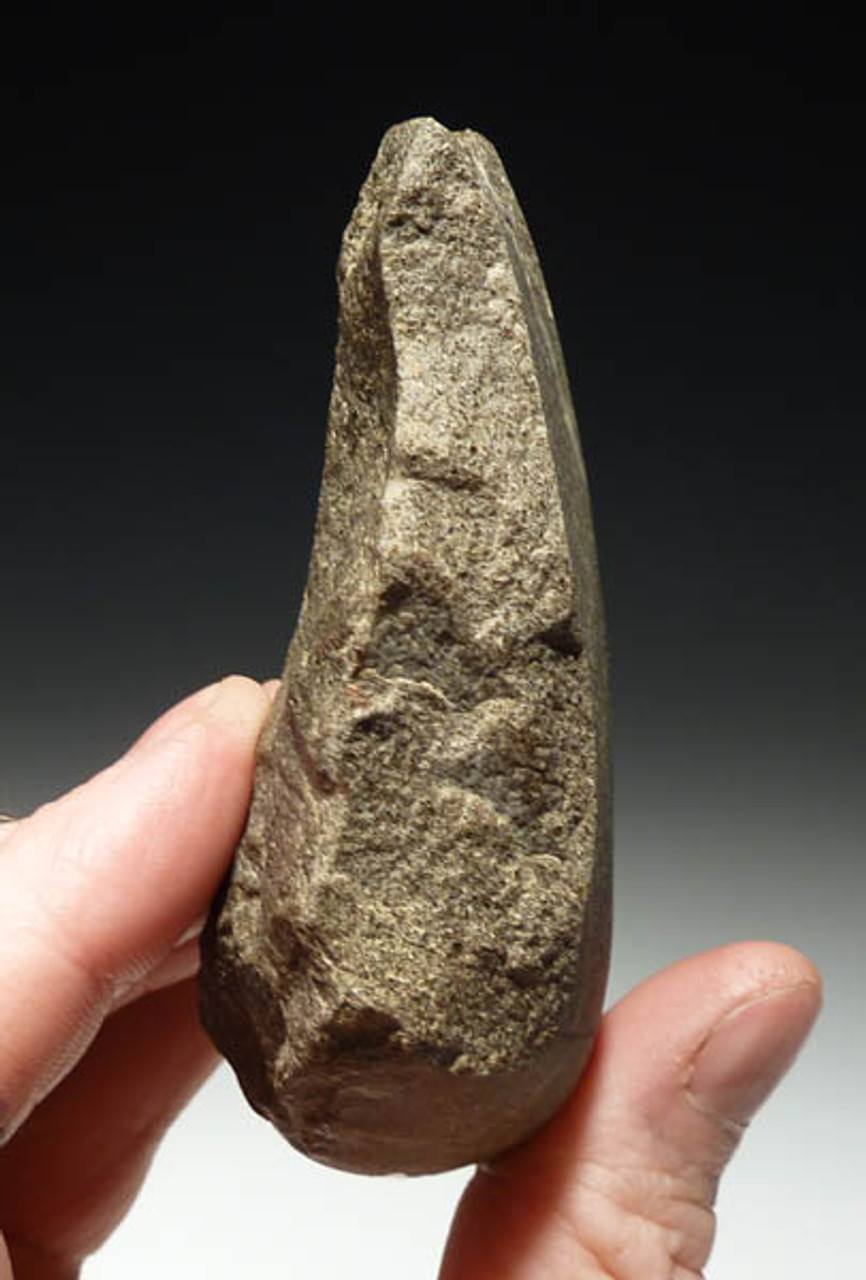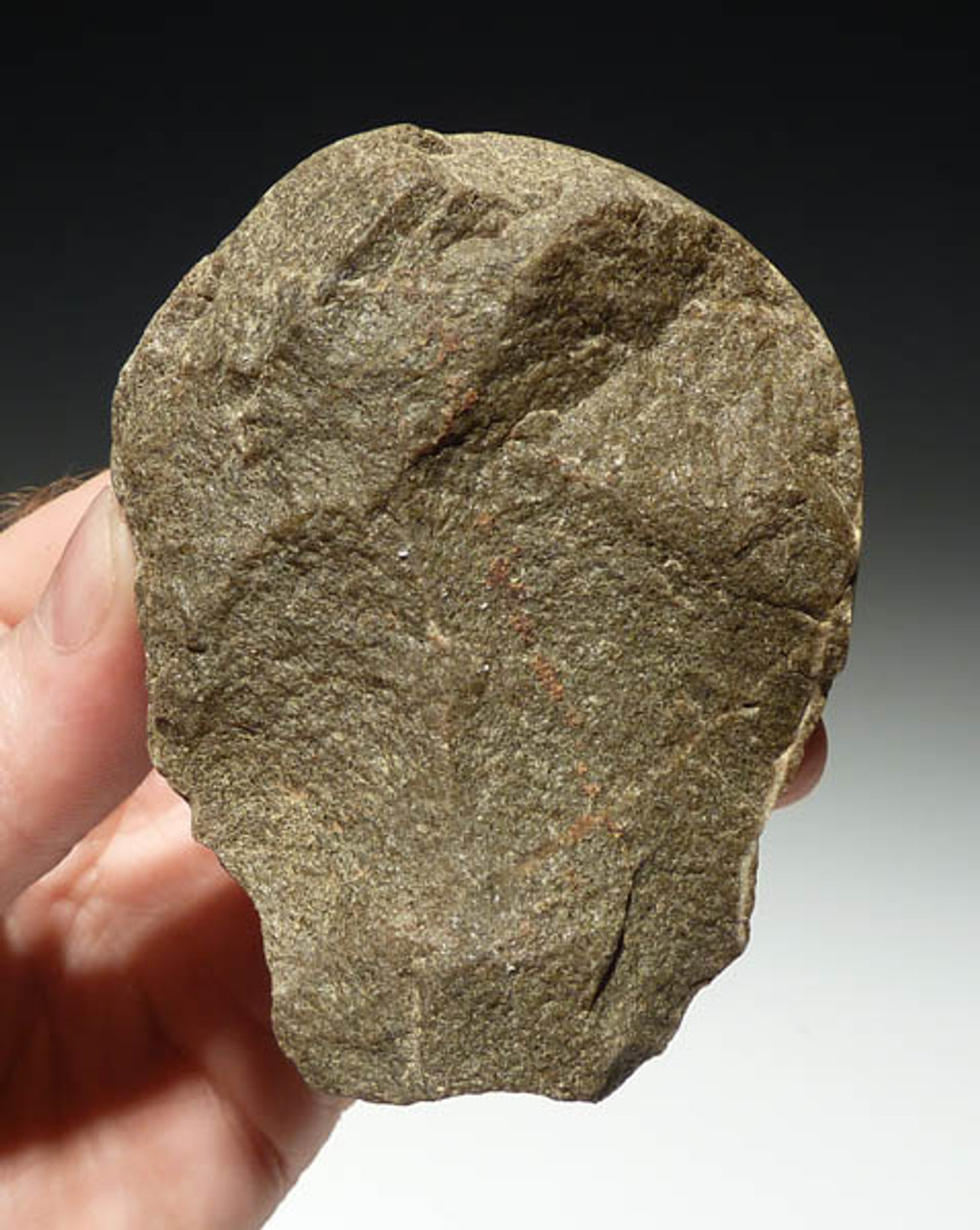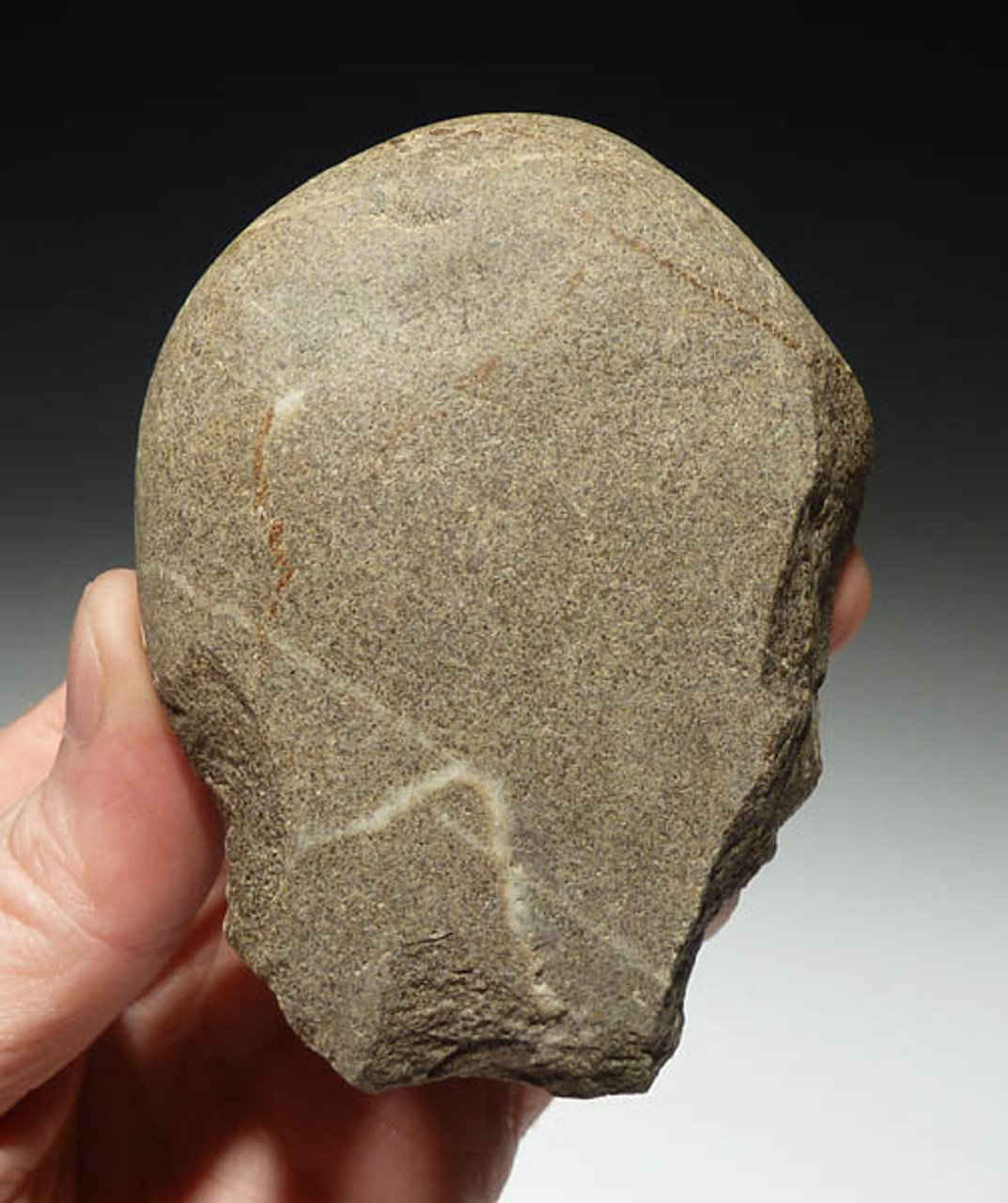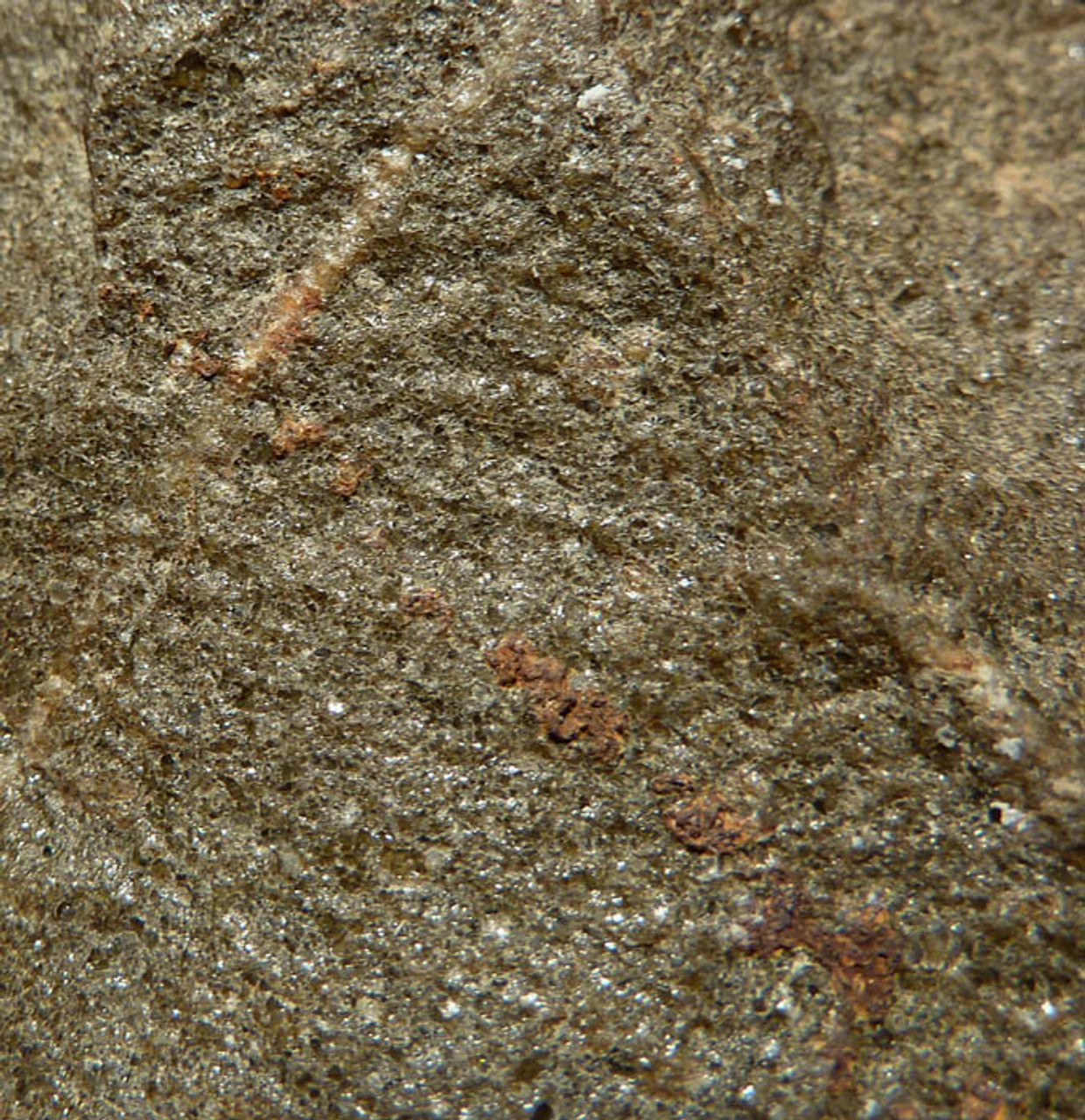Product Description
SEE MORE LOWER PALEOLITHIC ACHEULEAN STONE TOOLS
This is an exceptional Early Acheulian hand axe from this southern French Lower Paleolithic site of world study and importance. It is nearly unifacial with minimal bifacial flaking to sharpen and create a finger rest. Axe is meant for the right hand and literally fits like a glove when held. Chopping tip is complete as made and broad like a mini-cleaver. Microscopic examination (and above close-up image) shows evidence ONLY found in authentic Paleolithic specimens - embedded mineral and substrate deposits deep into the surface with no modern flaking or crushing of the stone surface where flaked. Feel, form and function of this tool is superb.
Truly, no artifact could be more important or impressive to collectors and museum curators than one which had been fashioned and dates back to the VERY FIRST human occupation of Europe! This magnificent hand axe comes from a famous Lower Paleolithic site in Southern France and was fashioned by Homo erectus in the Early Acheulian tradition of the Lower Paleolithic Period! This tool was made from a quartzite river cobble and was found where early humans once lived on the terraces of the Haute-Garonne river in Southwest France. Recent studies report extensive continual prehistoric habitation from the Early Lower Paleolithic to the Upper Paleolithic. The different ages are found in the different terraces and layers (see references below). This superb and intact, complete specimen comes from this site and exhibits Acheulian technology dating from approximately 800,000 to over 300,000 years ago and was manufactured by some of the first humans to migrate into Europe from Africa.
WARNING: Occasionally these "tools" can be found for sale on the internet and at shows. The majority are nothing more than damaged ancient river cobbles caused by environmental action (glacial disturbance, frost damage, etc.) as well as plow damage since these are found in farm land. Every broken cobblestone found on the Haute-Garonne terraces is NOT a human-created Paleolithic tool! The determination of what is manmade and what is an ordinary broken river rock requires a very high level of understanding Paleolithic tool manufacture and technique as well as the experience to be able to differentiate the two and authenticate a genuine stone tool from this culture. If in doubt, consult a scientific expert.
References: Le paléolithique inférieur et moyen en Midi toulousain : nouvelles données et perspectives de l’archéologie préventive (Bruxelles et al., 2003); The Acheulian of Western Europe (Manuel Santonja and Paola Villa)
 US DOLLAR
US DOLLAR
 EURO
EURO
 AUSTRALIAN DOLLAR
AUSTRALIAN DOLLAR
 CANADIAN DOLLAR
CANADIAN DOLLAR
 POUND STERLING
POUND STERLING


